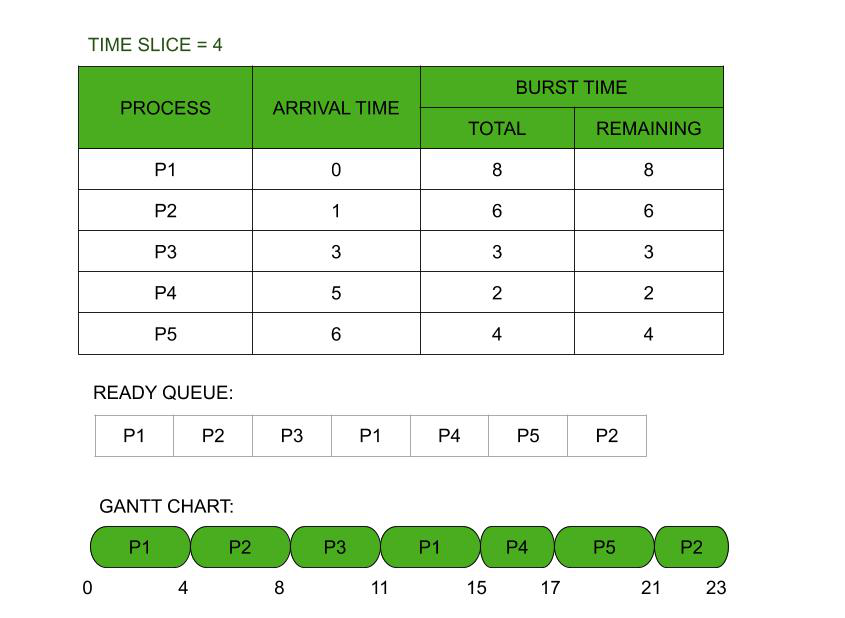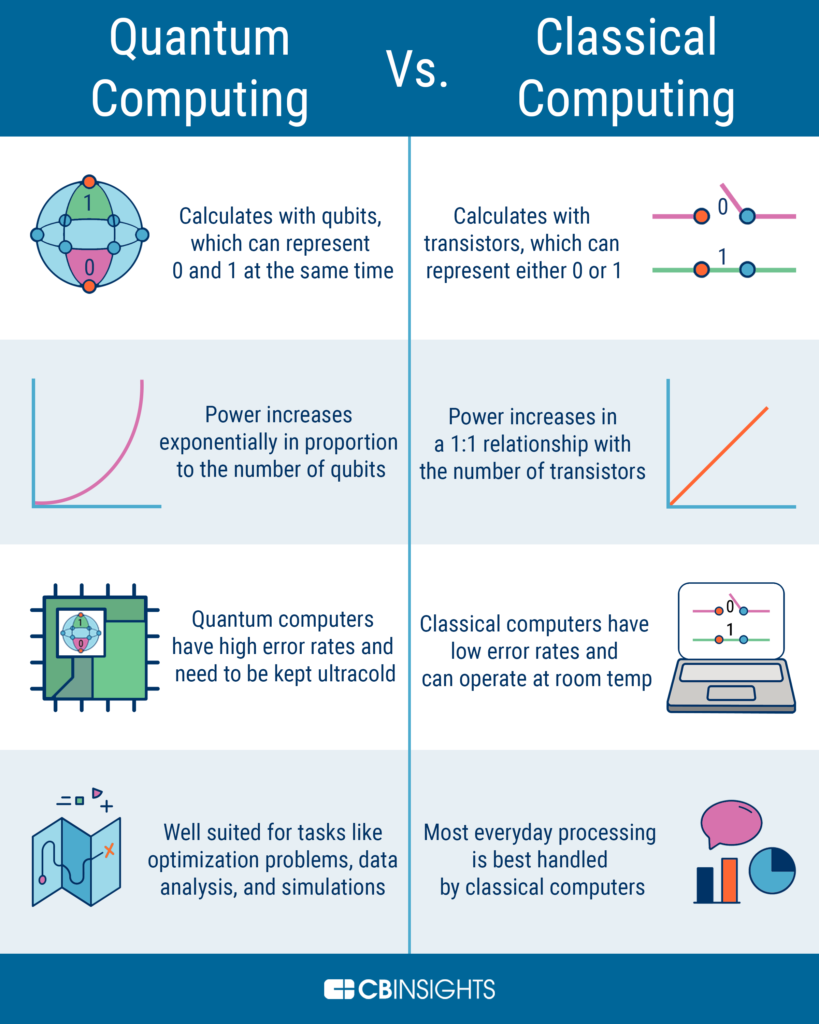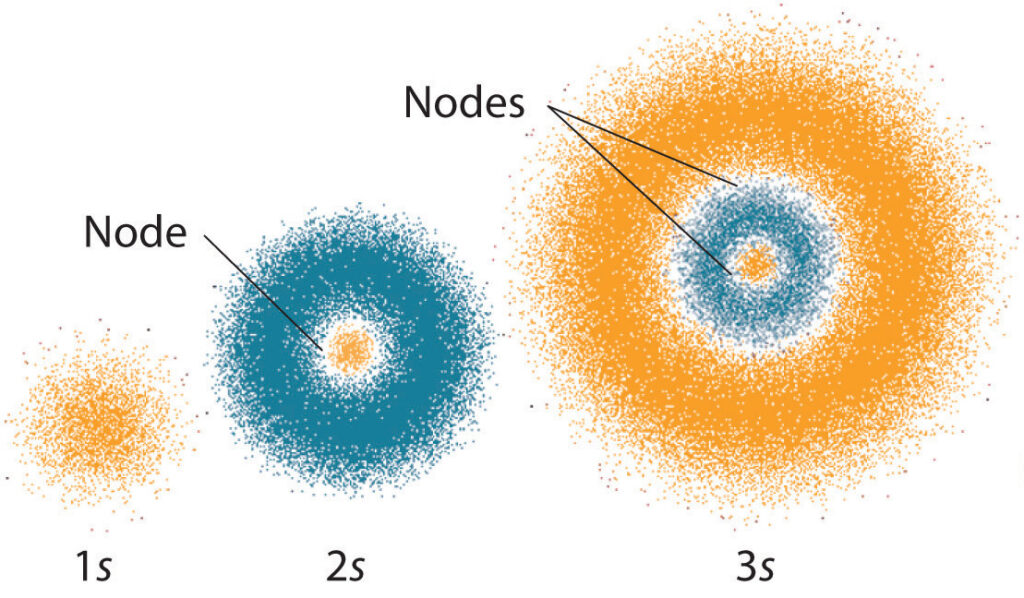As a computer science professional, you may have come across the term “Round Robin” while working with scheduling algorithms. Round Robin is a popular scheduling algorithm used to manage processes in a computer’s operating system. It is a pre-emptive algorithm that assigns a fixed time quantum to each process, allowing multiple processes to run simultaneously on a single processor.
One crucial aspect of the Round Robin algorithm is determining the appropriate time quantum for each process. The time quantum is the amount of time given to each process before the algorithm pre-empts it and switches to the next process in the queue. In this article, we will discuss the factors that affect the time quantum and the steps involved in calculating the time quantum for the Round Robin algorithm. By the end of this article, you will have a clear understanding of how to calculate the time quantum for the Round Robin algorithm and optimize your system’s performance.
Round Robin is one of the commonly used scheduling algorithms in Operating Systems. Time quantum is a vital parameter of the Round Robin algorithm. It defines the amount of time for which a process can execute before a context switch. To calculate the time quantum for Round Robin, you need to consider the following factors:
- Process execution time
- System throughput
- Process Priority
- Average waiting time
Time quantum should be selected in such a way that it meets the requirements of the system. It should be set to such a value that it optimizes the system throughput, process priority and average waiting time.

How to Calculate Time Quantum for Round Robin Algorithm?
Round Robin is a scheduling algorithm that is used to assign processes to a processor in an operating system. It works by giving each process a certain amount of time, known as a time quantum, to run before being preempted. The amount of time quantum assigned to each process is important for the overall performance of the system. This article will explain how to calculate the time quantum for Round Robin scheduling.
What is a Time Quantum?
A time quantum is a unit of time used in Round Robin scheduling. It is the amount of time a process is allowed to run before it is preempted and another process is scheduled. The time quantum is important because it determines the amount of time each process is allowed to run before being switched out.
The time quantum is usually set to a value that is long enough to allow the process to complete its task but short enough to ensure that the processor is not idle for too long. If the time quantum is too small, the system may become overloaded and processes may not be able to finish their tasks. If the time quantum is too large, the processor may spend too much time running a single process and not enough time running other processes.
How to Calculate the Time Quantum
The time quantum for Round Robin scheduling can be calculated using the following formula: Time quantum = (1/N) * (1/T), where N is the number of processes, and T is the total time needed for all processes to complete.
The time quantum can be adjusted depending on the needs of the system. If the system needs to be more responsive and processes need to finish quickly, the time quantum can be set to a shorter value. If the system needs to be more efficient and processes can take longer to finish, the time quantum can be set to a longer value.
How to Determine the Time Quantum for Each Process
Once the time quantum has been calculated, the next step is to determine the time quantum for each process. This can be done by dividing the total time quantum by the number of processes. For example, if the total time quantum is 10 and there are 4 processes, each process will get a time quantum of 2.5.
The time quantum for each process can also be adjusted depending on the needs of the system. If a process needs to take longer to finish, the time quantum can be set to a longer value. If a process needs to finish quickly, the time quantum can be set to a shorter value.
Conclusion
Calculating the time quantum for Round Robin scheduling is important for the overall performance of the system. The time quantum should be set to a value that is long enough to allow the process to complete its task but short enough to ensure that the processor is not idle for too long. The time quantum can be calculated using the formula Time quantum = (1/N) * (1/T), where N is the number of processes, and T is the total time needed for all processes to complete. The time quantum for each process can be determined by dividing the total time quantum by the number of processes.
Frequently Asked Questions about Calculating Time Quantum for Round Robin Algorithm
Here you can find answers to questions about calculating time quantum for the round robin algorithm.
What is the Round Robin Algorithm?
The Round Robin algorithm is a scheduling algorithm used in computer science and operating systems. This algorithm assigns each process a certain time quantum or “time slice” that it can run for, and then moves on to the next process in line. This ensures that each process is given a fair amount of time to run, while still ensuring that all processes are completed in a timely manner.
What is Time Quantum?
Time quantum is the amount of time a process is allowed to run for before the Round Robin algorithm moves on to the next process. This amount of time is determined by the system administrator, and is based on the system’s hardware and software specifications. The time quantum can be adjusted to accommodate different types of tasks, as well as the number of tasks that need to be completed.
How is Time Quantum Calculated?
Time quantum is calculated based on the system’s hardware and software specifications. The time quantum can be determined by considering the number of tasks that need to be completed, the type of tasks, and the amount of time that is required to complete each task. Additionally, the system administrator may also consider the amount of memory and CPU utilization in order to determine the time quantum.
What Factors Should be Taken into Consideration When Calculating Time Quantum?
When calculating time quantum, the system administrator should take into consideration the type of tasks, the number of tasks, the amount of time that is required to complete each task, and the amount of memory and CPU utilization. Additionally, the system administrator should also consider the amount of time that is available to complete all of the tasks and the amount of time that is needed for each task.
What are the Benefits of Using the Round Robin Algorithm?
The Round Robin algorithm is a fair and efficient way of scheduling tasks. It ensures that each process is given a fair amount of processing time, while still allowing all processes to be completed in a timely manner. This algorithm also helps to minimize the amount of time wasted due to waiting for long running processes to complete. Additionally, it also helps to minimize the amount of time needed to complete all of the tasks.

Round Robin Algorithm Tutorial (CPU Scheduling)
In conclusion, understanding how to calculate time quantum for round robin algorithm is a critical skill for any computer scientist or software developer. By applying this algorithm, you can ensure that your system operates efficiently and that all processes receive an equal amount of time to execute. Moreover, round-robin scheduling is widely used in modern operating systems, making it necessary to master this technique if you wish to excel in the field of computer science.
It is important to note that there is no one-size-fits-all approach to calculating the time quantum for round-robin scheduling. The optimal time quantum will depend on the specific needs of your system, including the number of processes, their execution time, and the available resources. Therefore, it is crucial to experiment with different time quantum values to determine the most efficient and effective approach for your system. With practice and experimentation, you can become a master of round-robin scheduling, and take your software development skills to the next level.



